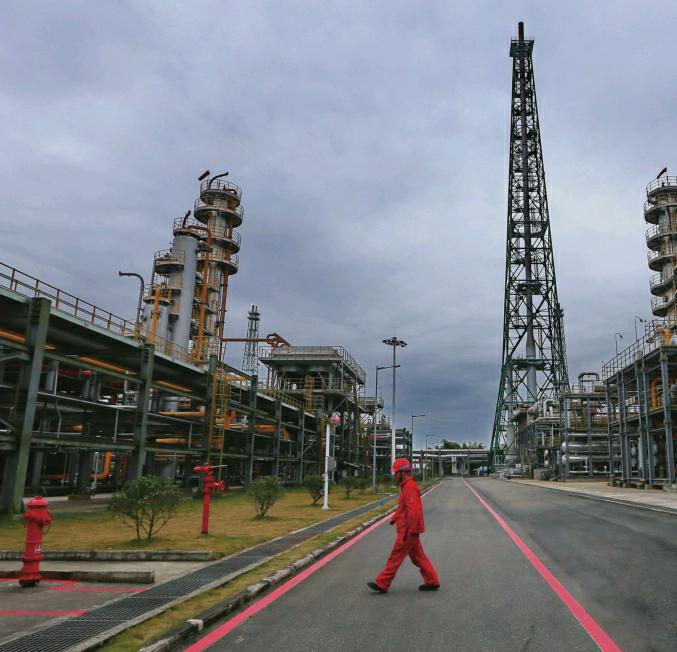China’s Resolve for SOE Reform Undiminished
2017-08-02
With specifi c goals and a clear timetable, China is determined to improve the effi ciency of its state-owned enterprises(SOEs).
By the end of this year, China will basically have completely restructured SOEs, according to the 36th meeting of the Central Leading Group for Deepening Overall Reform.
A modern corporate system, which separates government administration from business operations, will allow SOEs to function as effi ciently as other business entities, according to Li Jin, chief researcher with the China Enterprise Research Institute.
According to the State-Owned Assets Supervision and Administration Commission(SASAC) of the State Council, over 90 percent of the subsidiaries of central SOEs had been restructured by the end of 2016, while the ratio of enterprises supervised by provincial-level state asset regulators also reached over 90 percent.
“The corporate system reform has entered its final stage. The task is still a hard one, and it requires a great deal of hard work from both the SASAC and the companies,” Li said.
A more efficient, flexible and marketoriented management mechanism is the groundwork for the ownership reform of SOEs, said Peng Huagang, Deputy Secretary General of the SASAC.
Mixed ownership reform—diversifying the shareholding structure of SOEs—is likely to take off in the second half of the year.
According to the National Development and Reform Commission (NDRC), a total of 20 SOEs, split into two groups in industries ranging from electrical services to civil aviation, are experimenting with a mixedownership structure that includes private or even foreign investment.
“The scope of a third group will be expanded, with priority given to enterprises in provincial-level regions,” read an NDRC statement.
The specifics of such ownership are likely to be clarifi ed in the next few months, and companies in the oil and gas industries will be at the forefront, reported the China Securities Journal.
As part of the mixed ownership reform, employees of some SOEs are being offered stocks as an incentive, a scheme that will likely speed up and expand this year, the newspaper reported.
To make SOEs leaner and healthier, the SASAC also plans to reduce the number of central SOEs to fewer than 100 this year, with coal power, steel and heavy equipment manufacturing industries in the spotlight.
“Reducing the number itself is not the goal of restructuring. We care more about what the reforms will actually bring,” said Peng. “We are not seeking abrupt changes, but are looking for a chain reaction.”
SOE reform specifically addresses overcapacity, poor corporate governance and low labor productivity, all of which drag down profi ts.
In the first five months of this year, the combined profi ts of SOEs were more than 1 trillion yuan ($147 billion), up an astonishing 25.5 percent year on year and dwarfi ng the 1.7 percent realized in 2016, according to data from the Ministry of Finance.
As SOE reform continues, the authorities must focus on such thorny issues as incomplete corporate governance systems and lack of internal controls, said Li.
